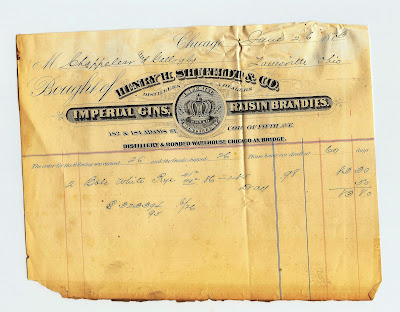I picked up this Schmit Brothers billhead recently in Eau Claire. I currently have it for sale on ebay right now. It is a nice triple graphic billhead. Here is my ebay write up: 1895 billhead for The Schmit Brothers Trunk Company manufacturers of trunks, traveling bags and valises of Oshkosh Wisconsin. Great header graphics with three images. Left side is the firm’s mill at Summit Lake, middle is the firm’s factory and left side is the firm’s warehouse. Billhead has creases. Peter Schmit was born in 1840 in Prussia. He emigrated to the U.S. in June 1854 and located inRacine WI. He was engaged in farming until 1861 when he enlisted in Company D, 6th Wisconsin Volunteer Infantry. He engaged in the battles at Chancellorsville, Fredericksburg, Mine Run, Bull Run, Gettysburg, Atlanta, Macon, and Savannah. He was mustered out in June 1865. He came back to Racine and kept a hotel until 1866 when he joined his brother Henry’s trunk business. Henry had established the bus...


















Comments